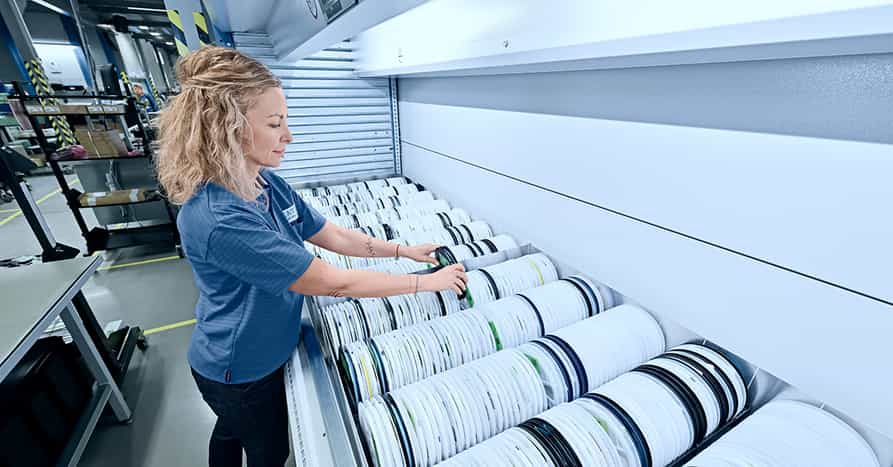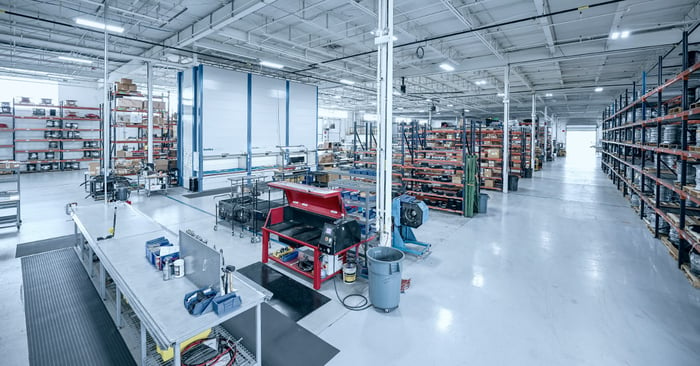ASRS provides high levels of visibility to current inventory levels, helping mitigate two of the worst inventory problems facing order fulfillment operations – stockouts and overstocks. In this blog post, we will discuss how ASRS can help optimize stock management and prevent inventory-related issues.
What are stockouts... and why are they bad?
Stockouts are simply when a certain item or inventory is out of stock, hence the name “stockout.” Stockouts occur when supply is not available, or when there’s some sort of breakdown in the supply chain communication or decision making processes that determine when more stock is ordered.
Stockouts can be costly in a few different ways. First, if a manufacturing operation is depending on a certain part for an assembly and it’s not in stock, that assembly is not getting made. This leads to disgruntled customers and backups elsewhere in the line. In direct to consumer operations, a stockout means a customer can’t get the product they want and will likely go to another business to try and get the same product, leading to decreased revenue and a big impact on the bottom line.
What is overstock... and why is it bad?
Overstocks refer to when too much inventory is ordered and need to be stored in the warehouse. Overstocks leads to internal inefficiencies that effect the bottom line in more subtle ways. When there is too much inventory and no where to put it, boxes end up filling aisles and disrupting the flow of goods in the warehouse - decreasing throughput and leading to slower order fulfillment times. That extra inventory represents cash that could be added directly to your bottom line - and it's also taking up valuable floor space that could be put to better use.
In any situation, stockouts and overstocks hurt the bottom line of any warehouse operation and should be mitigated as best as possible.

How can ASRS help reduce the risk of stockouts and overstocks?
ASRS is typically integrated with the warehouse management system to automate the replenishment process, to avoid stockouts and overstock situations. When stock levels drop below a predetermined threshold, the ASRS can automatically trigger the replenishment request of those items by notifying whoever is responsible for purchasing new inventory, ensuring that optimal stock levels are maintained and stockouts are avoided. This level of automation not only helps prevent stockouts and overstocks but also saves time and resources that would otherwise be spent on manual replenishment processes, improving overall efficiency and throughput in the warehouse.
ASRS collects and stores data on inventory movement, which can be used to analyze trends and patterns. This data-driven approach not only enables more accurate forecasting of future demand, helping businesses make better-informed decisions on stock levels, it also comes with the added benefit of seeing what inventory isn’t moving. This unmoving inventory is called deadstock or overstock, and puts an unnecessary strain on already expensive storage space. ASRS a) provides visibility into current deadstock levels and b) improves inventory space efficiency so that when warehouses are holding on to deadstock it has less of an impact than with traditional storage solutions. Plus, knowing which items aren’t moving can educate management on what products may need different go-to-market strategies to get that inventory moving.
By implementing ASRS in a warehouse, warehouses can significantly improve stock management processes, reducing the risks of stockouts and overstocks. With real-time inventory monitoring, improved forecasting, faster order processing, reduced human error, and optimized replenishment, ASRS can help any business maintain optimal stock levels and meet customer demand more effectively.





